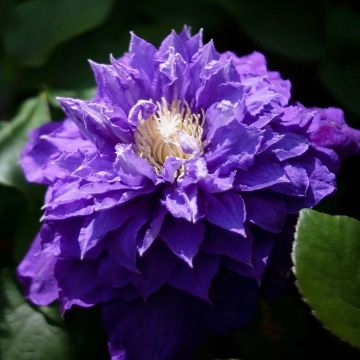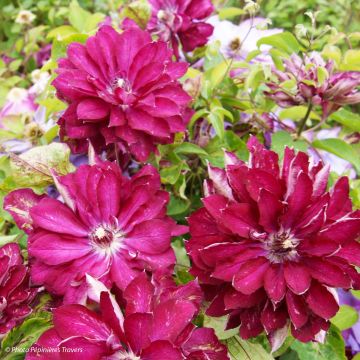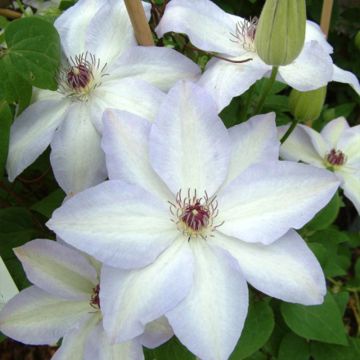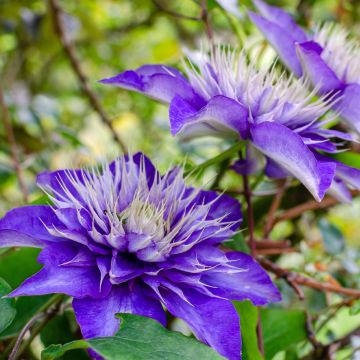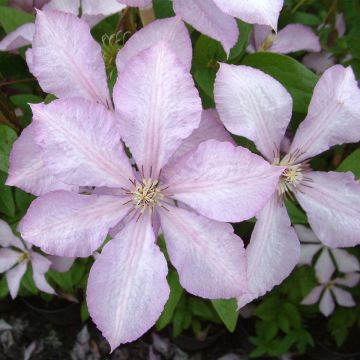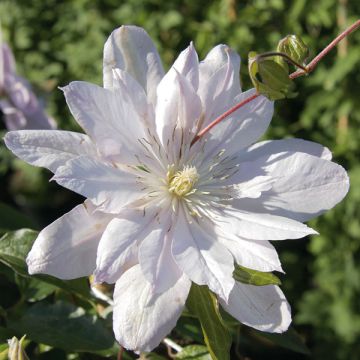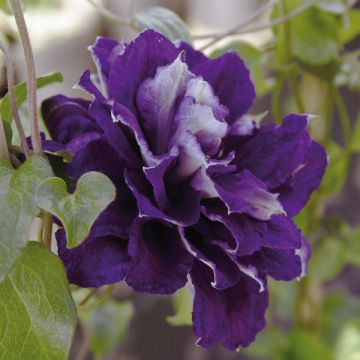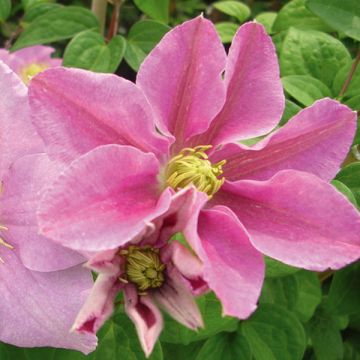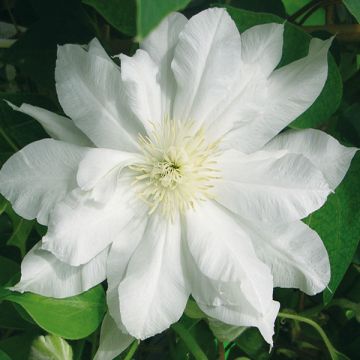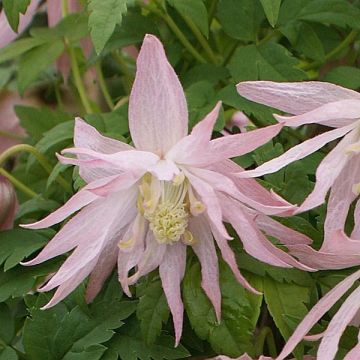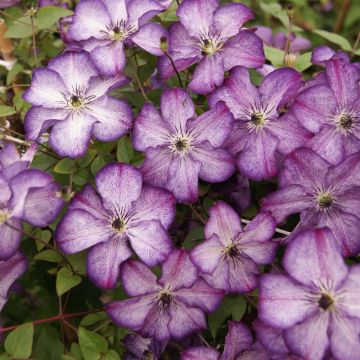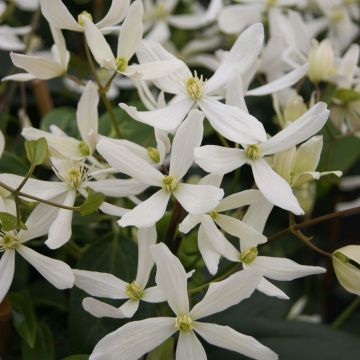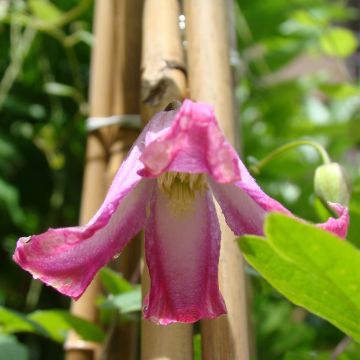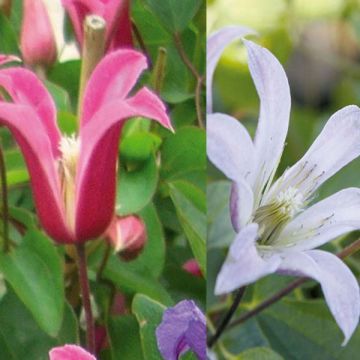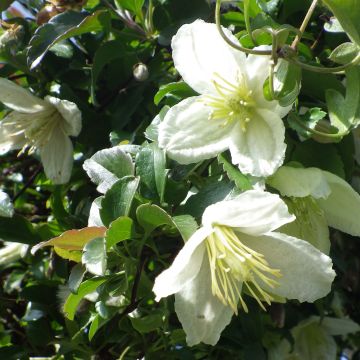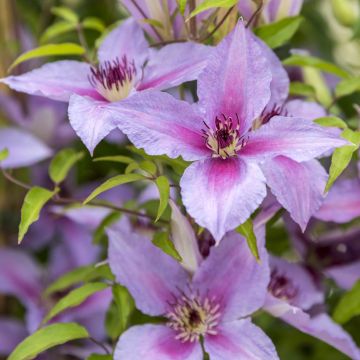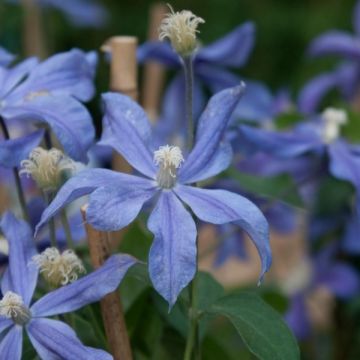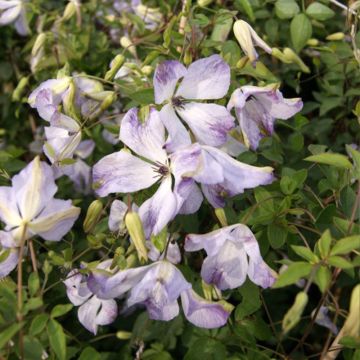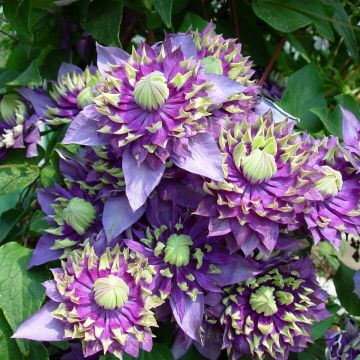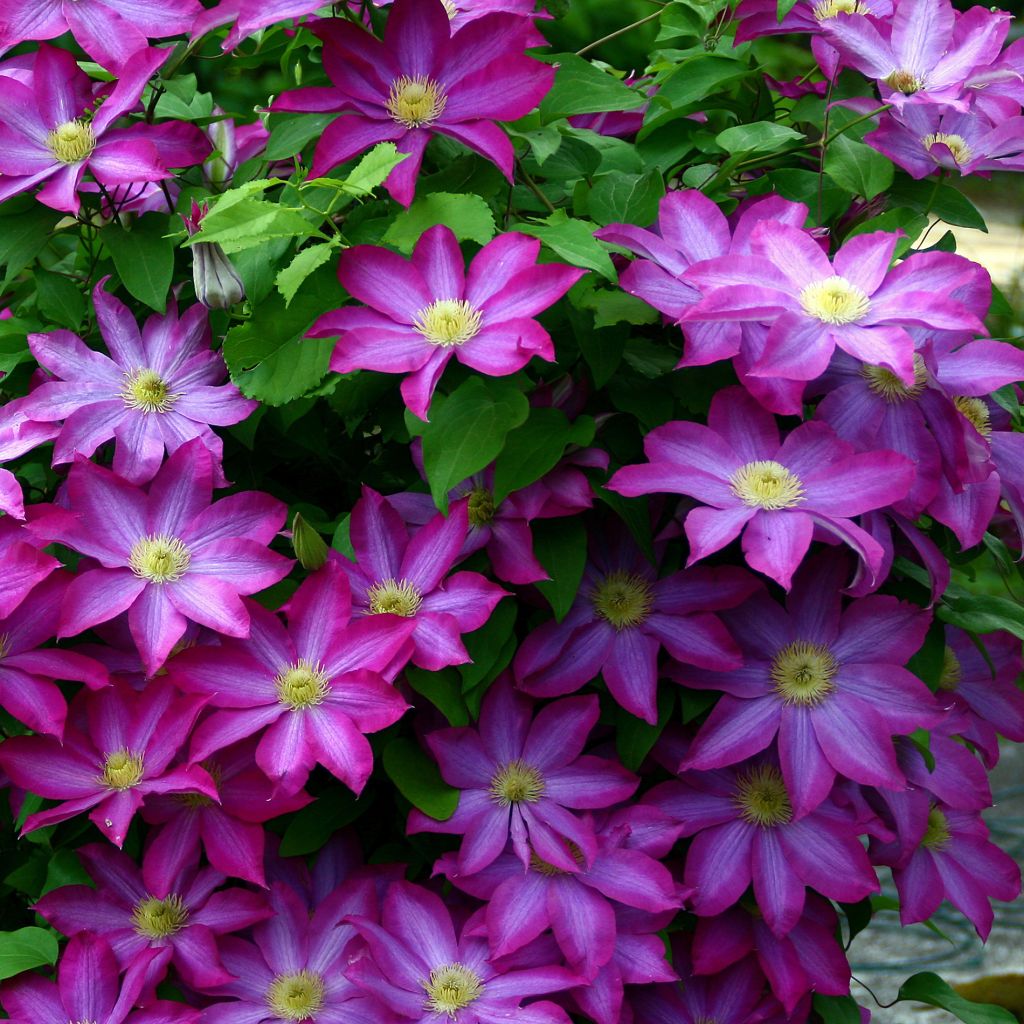

Clematis patens Kakio
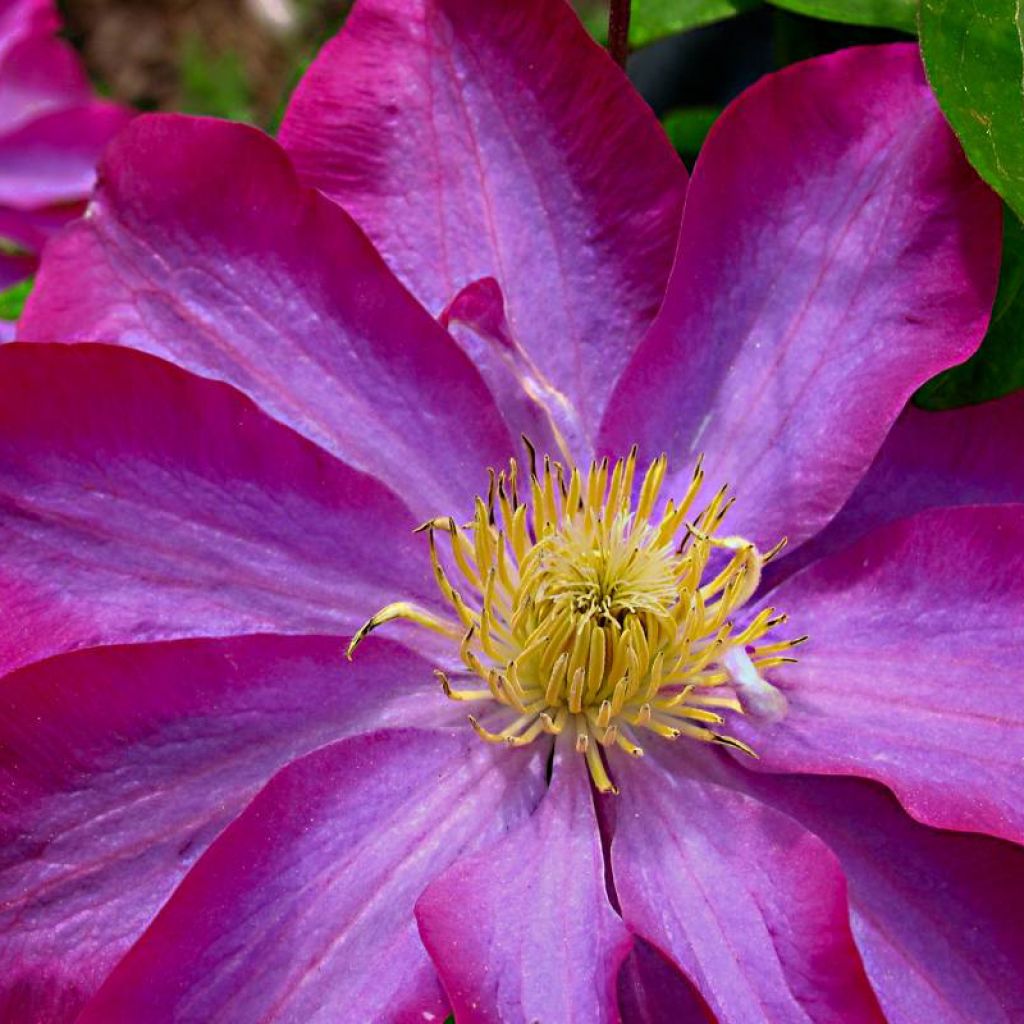

Clematis patens Kakio
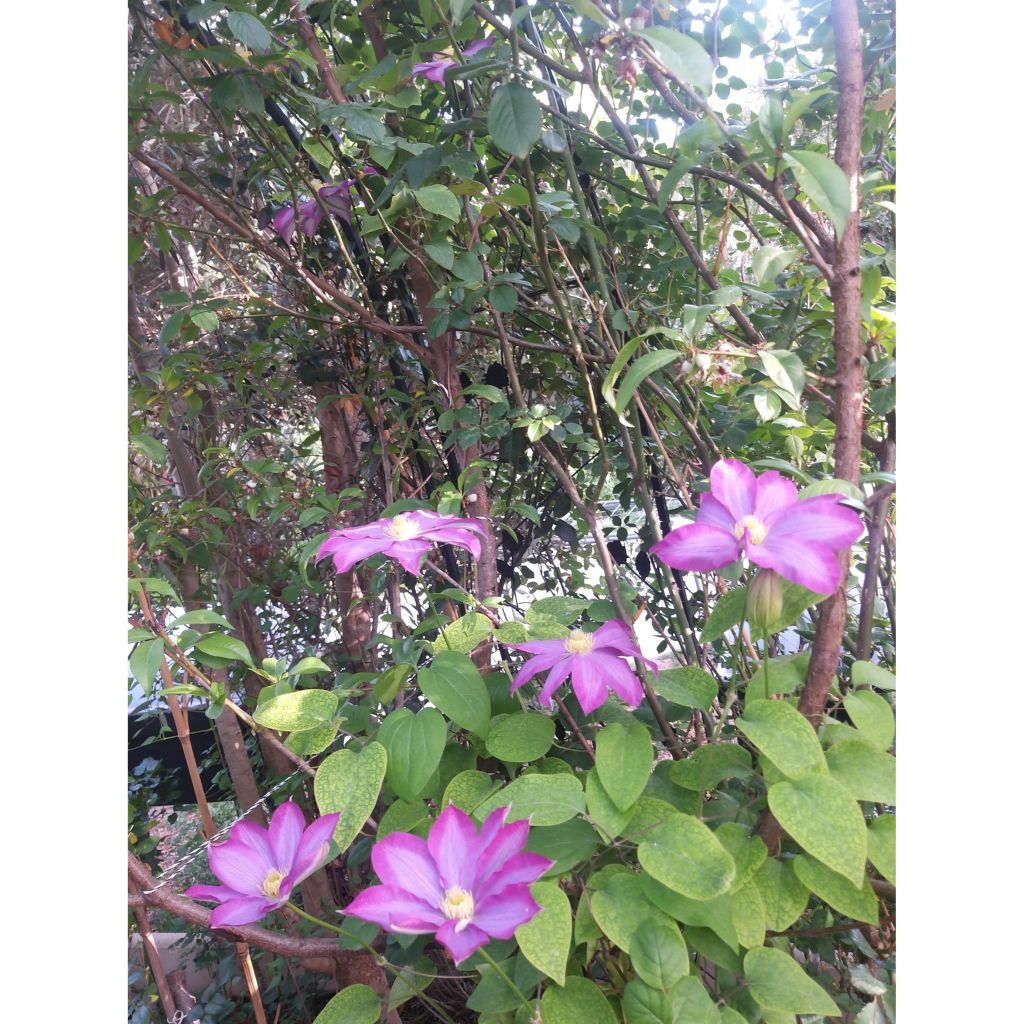

Clematis patens Kakio
Clematis patens Kakio
Clematis patens Kakio
Early Large-flowered Clematis
Unfortunately, nothing worked. It didn't make it past the first year in the end. After planting it properly (with the root ball tilted in moist soil, the base protected by half a broken pot of soil), the tough start saw the stems drying up one after the other. Severe pruning and removing all the sick stems allowed for a slight recovery before the plant continued to wilt and eventually disappeared, leaving behind a dried-up stump without ever flowering. A beautiful... disappointment. Thankfully, the honeysuckle planted next to it is now stunning but lonely.
Molpé41, 12/06/2024
This item cannot be shipped to the selected country
Delivery charge from €5.90
More information
Schedule delivery date,
and select date in basket
This plant carries a 6 months recovery warranty
More information
We guarantee the quality of our plants for a full growing cycle, and will replace at our expense any plant that fails to recover under normal climatic and planting conditions.
From €5.90 for pickup delivery and €6.90 for home delivery
Express home delivery from €8.90.
Does this plant fit my garden?
Set up your Plantfit profile →
Description
The Clematis 'Kakio', also known as 'Champagne Rosé', is a climbing plant that offers a double flowering with powerful hues. Its large flowers bloom for the first time in the middle of spring, revealing a range of pinkish-red tones with violet reflections and exposing a heart of yellow stamens. It then blooms again in late summer, providing us with an equally seductive perpetual flowering. Whether in a container or in the ground, it allows for covering pergolas, walls, and arches with a lot of character.
This recent creation comes from Japan. It is the result of successful hybridisation work and has undoubtedly inherited its sumptuous colours from its parents ('Star of India'). From May to June, this Clematis, which can reach a height of 2-3 m (7-10ft), bears large single flowers, measuring approximately 10 cm (4in) in diameter, on the previous year's branches. These flowers consist of eight overlapping tepals, with slightly undulating margins that taper at the end. They open fully in a star shape, revealing a heart of yellow stamens. The colour tones vary and depend on the climate. They are usually in the pink range, leaning towards fuchsia and violet in certain latitudes, and tend to lean towards red-purple in others. However, they always have a lighter central stripe, often subtly veined. In August, a second flowering emerges from the current year's stems, offering flowers until September. Afterwards, fruits appear, which decorate the foliage until winter. The leaves, composed of 3 to 5 leaflets, are deciduous and have a beautiful deep green colour. They are carried by voluble stems that wrap around their support.
Like most of its relatives, 'Kakio' prefers a light, deep, fresh, and fertile soil, preferably neutral. It appreciates a sunny or partially shaded position, with the base of the plant always in shade. It is resistant to cold and can withstand frost, even severe frost. However, it does not tolerate stagnant moisture, so the substrate must be well-drained and watering should be moderate (if necessary, especially during the first year). It can be grown in a container, provided it is sufficiently large (minimum 60 cm (24in) in diameter).
Very floriferous, 'Champagne Rosé' or 'Kakio' generously covers various supports and enhances them with its enchanting shades. It blends perfectly with other Clematis varieties and climbing roses, ensuring a full season of flowers if you take care to choose successive bloomers. For instance, the viticella varieties 'Purpurea Plena' and 'Black Prince', as well as 'Jan Fopman', will take over in mid-summer, just like the Rose 'Crimson Sower'. In spring, consider late tulips that will welcome them in the same colour tones.
Report an error about the product description
Clematis patens Kakio in pictures
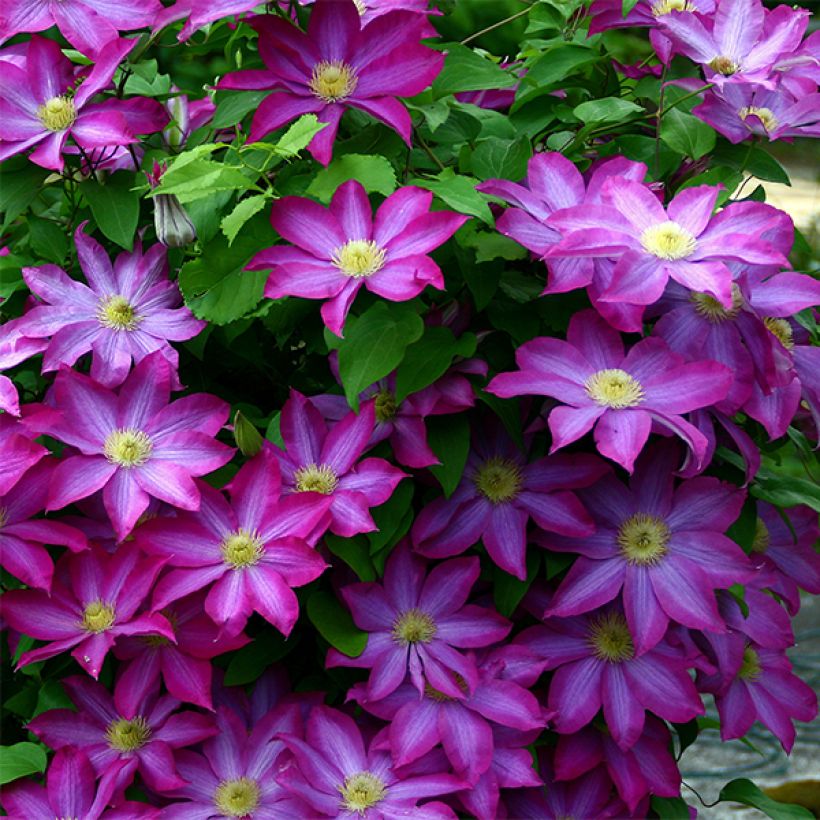

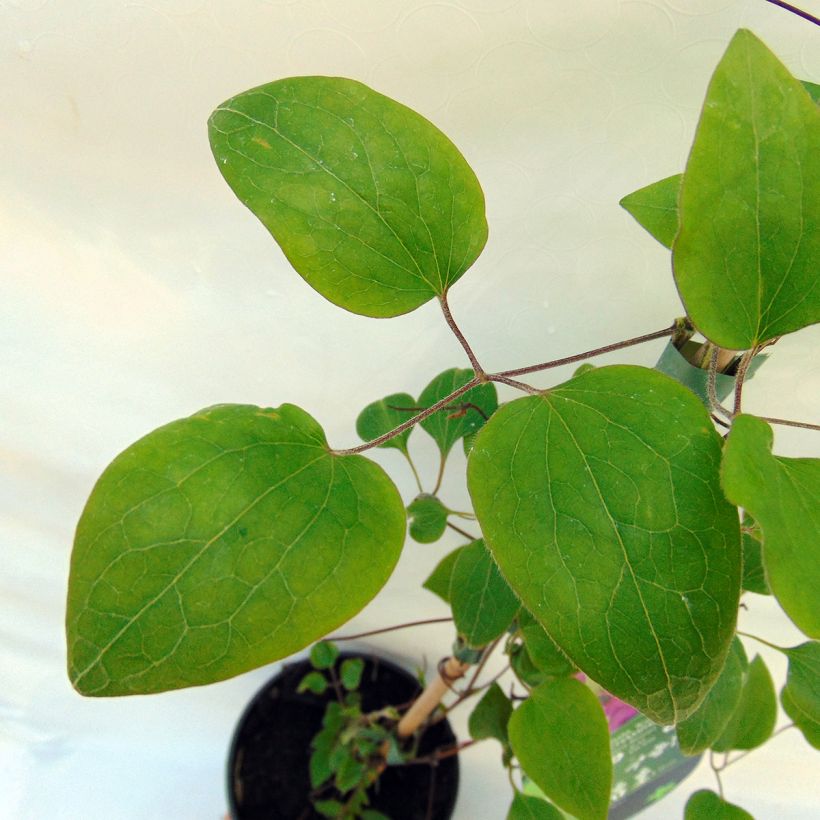

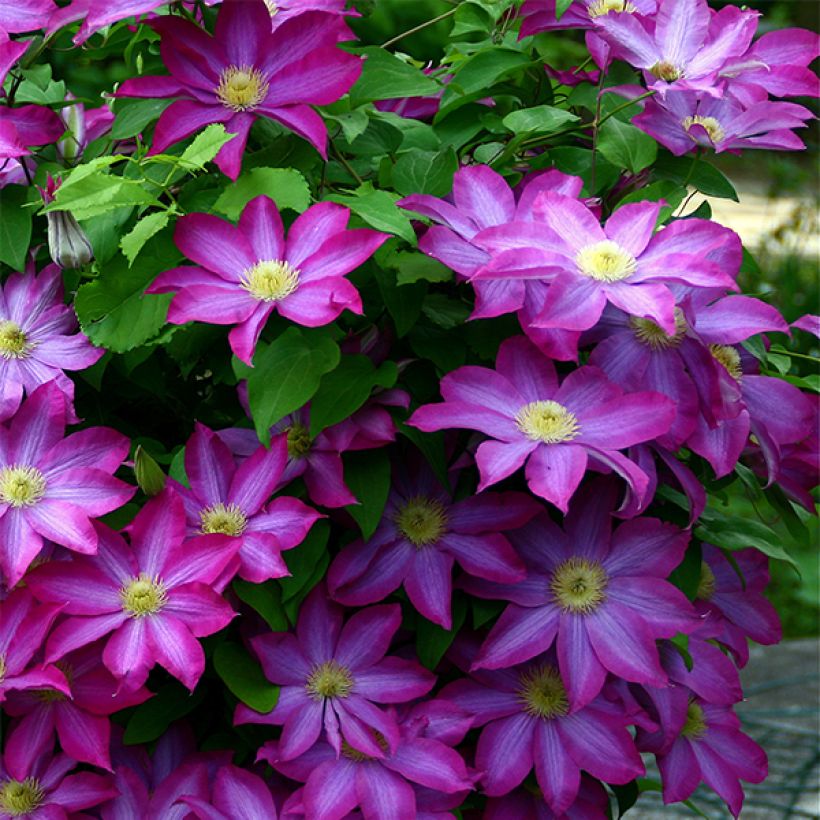

Plant habit
Flowering
Foliage
Botanical data
Clematis
patens
Kakio
Ranunculaceae
Early Large-flowered Clematis
Cultivar or hybrid
Other Clematis Patens
Planting and care
The 'Kakio' Clematis should be planted in spring or autumn at a depth of 5 cm (2in), with the root ball placed diagonally on the ground. The top should be in the sun (or partial shade) and the base in the shade. You can place a flat tile in front of the stump or plant ground cover plants. It prefers moderately moist, deep, well-worked, drained, and rich soil. Please note that its colours will not be as vibrant if it is placed in full sun and it does not appreciate excessively hot exposures. Cover the base with a small mound of soil to encourage the emergence of new shoots. After planting, prune the shoots to 30 cm (12in) from the base, above a pair of buds. Train them loosely to help the plant cling on its own later on. Maintenance pruning should be carried out after flowering (in mid-summer) to remove faded flowers and shorten the flowering shoots. This will allow the plant to produce new shoots for a second flowering. More vigorous pruning can be done in spring to cut back certain shoots more severely, but not necessarily every year. Watch out for pests such as aphids and gastropods.
Planting period
Intended location
Care
-
, onOrder confirmed
Reply from on Promesse de fleurs
Clematis
Haven't found what you were looking for?
Hardiness is the lowest winter temperature a plant can endure without suffering serious damage or even dying. However, hardiness is affected by location (a sheltered area, such as a patio), protection (winter cover) and soil type (hardiness is improved by well-drained soil).

Photo Sharing Terms & Conditions
In order to encourage gardeners to interact and share their experiences, Promesse de fleurs offers various media enabling content to be uploaded onto its Site - in particular via the ‘Photo sharing’ module.
The User agrees to refrain from:
- Posting any content that is illegal, prejudicial, insulting, racist, inciteful to hatred, revisionist, contrary to public decency, that infringes on privacy or on the privacy rights of third parties, in particular the publicity rights of persons and goods, intellectual property rights, or the right to privacy.
- Submitting content on behalf of a third party;
- Impersonate the identity of a third party and/or publish any personal information about a third party;
In general, the User undertakes to refrain from any unethical behaviour.
All Content (in particular text, comments, files, images, photos, videos, creative works, etc.), which may be subject to property or intellectual property rights, image or other private rights, shall remain the property of the User, subject to the limited rights granted by the terms of the licence granted by Promesse de fleurs as stated below. Users are at liberty to publish or not to publish such Content on the Site, notably via the ‘Photo Sharing’ facility, and accept that this Content shall be made public and freely accessible, notably on the Internet.
Users further acknowledge, undertake to have ,and guarantee that they hold all necessary rights and permissions to publish such material on the Site, in particular with regard to the legislation in force pertaining to any privacy, property, intellectual property, image, or contractual rights, or rights of any other nature. By publishing such Content on the Site, Users acknowledge accepting full liability as publishers of the Content within the meaning of the law, and grant Promesse de fleurs, free of charge, an inclusive, worldwide licence for the said Content for the entire duration of its publication, including all reproduction, representation, up/downloading, displaying, performing, transmission, and storage rights.
Users also grant permission for their name to be linked to the Content and accept that this link may not always be made available.
By engaging in posting material, Users consent to their Content becoming automatically accessible on the Internet, in particular on other sites and/or blogs and/or web pages of the Promesse de fleurs site, including in particular social pages and the Promesse de fleurs catalogue.
Users may secure the removal of entrusted content free of charge by issuing a simple request via our contact form.
The flowering period indicated on our website applies to countries and regions located in USDA zone 8 (France, the United Kingdom, Ireland, the Netherlands, etc.)
It will vary according to where you live:
- In zones 9 to 10 (Italy, Spain, Greece, etc.), flowering will occur about 2 to 4 weeks earlier.
- In zones 6 to 7 (Germany, Poland, Slovenia, and lower mountainous regions), flowering will be delayed by 2 to 3 weeks.
- In zone 5 (Central Europe, Scandinavia), blooming will be delayed by 3 to 5 weeks.
In temperate climates, pruning of spring-flowering shrubs (forsythia, spireas, etc.) should be done just after flowering.
Pruning of summer-flowering shrubs (Indian Lilac, Perovskia, etc.) can be done in winter or spring.
In cold regions as well as with frost-sensitive plants, avoid pruning too early when severe frosts may still occur.
The planting period indicated on our website applies to countries and regions located in USDA zone 8 (France, United Kingdom, Ireland, Netherlands).
It will vary according to where you live:
- In Mediterranean zones (Marseille, Madrid, Milan, etc.), autumn and winter are the best planting periods.
- In continental zones (Strasbourg, Munich, Vienna, etc.), delay planting by 2 to 3 weeks in spring and bring it forward by 2 to 4 weeks in autumn.
- In mountainous regions (the Alps, Pyrenees, Carpathians, etc.), it is best to plant in late spring (May-June) or late summer (August-September).
The harvesting period indicated on our website applies to countries and regions in USDA zone 8 (France, England, Ireland, the Netherlands).
In colder areas (Scandinavia, Poland, Austria...) fruit and vegetable harvests are likely to be delayed by 3-4 weeks.
In warmer areas (Italy, Spain, Greece, etc.), harvesting will probably take place earlier, depending on weather conditions.
The sowing periods indicated on our website apply to countries and regions within USDA Zone 8 (France, UK, Ireland, Netherlands).
In colder areas (Scandinavia, Poland, Austria...), delay any outdoor sowing by 3-4 weeks, or sow under glass.
In warmer climes (Italy, Spain, Greece, etc.), bring outdoor sowing forward by a few weeks.

































